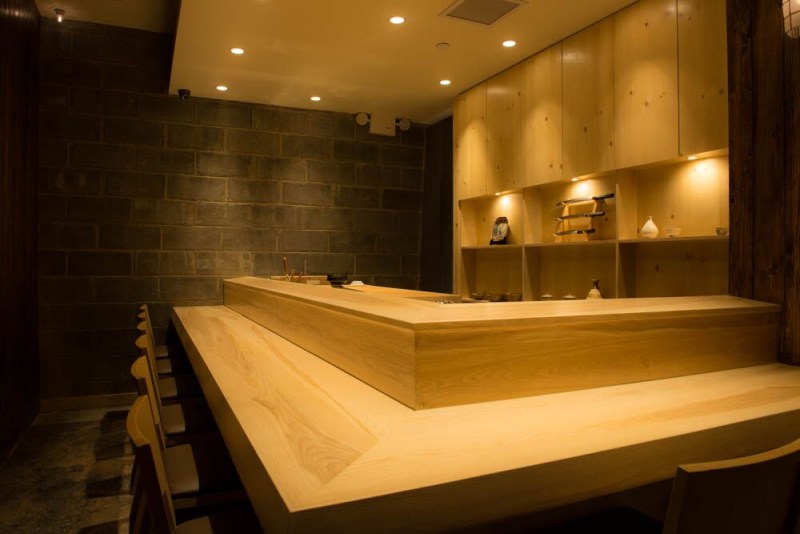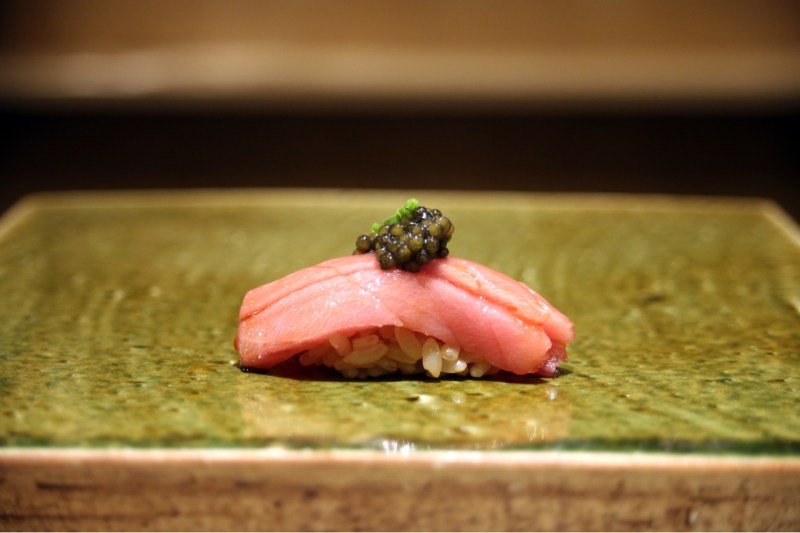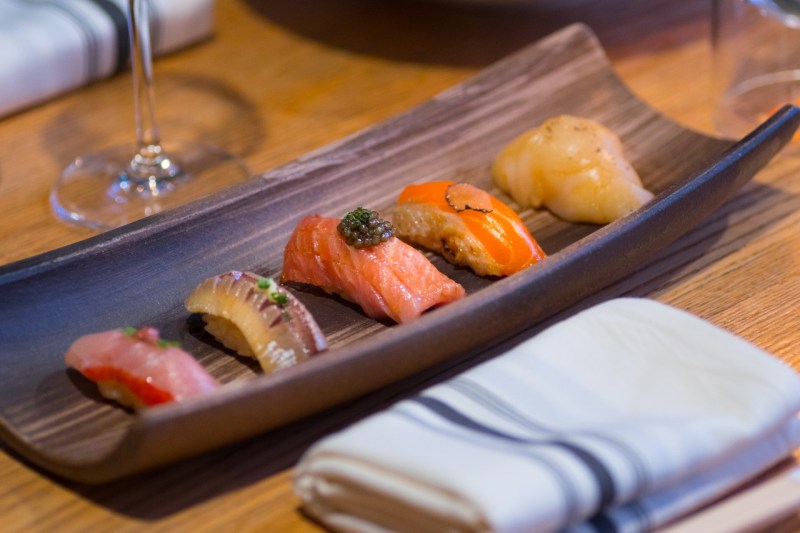Omakase, defined in Japanese as “I’ll leave it up to you,” is considered by most avid sushi eaters to be the best way to enjoy an elevated sushi meal. This style of chef’s tasting menu features a progression of different nigiri pieces, giving diners an all-encompassing taste of the chef’s skill and technique. Each sushi chef has also their own way of selecting fish and when combined with the huge variety of seafood used in Japanese cuisine, gives an omakase meal an incredible scope of styles and flavors.
Related Guides
- This 200-year-old French Pastry is the Next Big Thing
- When It Comes to International BBQs, Mexican Barbecue Reigns Supreme
- How Kimchi Changed Everything, a Memoir
To understand what goes behind a curated omakase, The Manual is featuring the insights of two sushi chefs — Chef Tomoyuki Hayashi of Michelin-starred Sushi AMANE and Chef Jay Zheng of Kōyō in Queens. This is an inside look at sushi made at the highest level.
The Progression of an Omakase

Generally, omakase sushi is structured on the central premise of moving from lighter to richer items. What this means is that the lighter, less fatty fish is served before the heavier, more full-flavored fish.
“The reason why it is structured in such a way is so that the lighter fish flavor would not be overpowered by the heavier fish,” said Zheng. “If we start from a robust flavored fish such as sardine or Aji, your palate would be fatigued by the time a lighter fish comes in to play and you would not be able to taste the full flavor of the fish.”
The choice of this lighter fish can vary depending on the style and personal tastes of the sushi chef. For Hayashi, he prefers to start his nigiri courses with a white fish such as kinmedai (Golden Eyed Red Snapper). For the richer items, Zheng likes to follow the white fish pieces with fattier fish like chu toro (fatty tuna) and King Salmon before finally progressing to Aji (Horse Mackerel) or Iwashi (sardine), which is even more intense in oily flavor.
While omakase sushi consists primarily of nigiri, many sushi chefs will include other items to freshen the palate. At Sushi AMANE, Hayashi likes to start his omakase with four small, non-nigiri dishes. Besides the nigiri, handrolls are also commonly served. Depending on the chef’s decision, these can be served at the beginning or the end of the omakase. Both Hayashi and Zheng prefer to serve handrolls at the end of the meal. Zheng fills his handroll with toro (fatty tuna) and tops them with uni, utilizing this piece as a filler at the end of a tasting.
There’s also another non-seafood item that’s common in omakase — Tamago. These Japanese-style omelets can resemble either a Swiss roll or a pound cake. It’s also sweet in flavor when compared to a typical Western-style omelet. Because of this, it’s often served at the end of an omakase as a dessert course. “My Tamago is on the sweeter, custardy side because I use honey as an ingredient, so I serve it at the very end to wrap up the meal,” said Hayashi.
Hands vs. Chopsticks
While it’s acceptable to eat nigiri with chopsticks, the best way is to enjoy them is with your hands. According to Zheng, the reason for this is that hands “helps to bring the nigiri closer to body temperature,” achieving a better balance. Because of this factor, some sushi chefs will make adjustments during their nigiri making depending on their observations of the diner.
“I make my nigiri rice fluffy so when it’s eaten by hand, the texture of the fish and rice are in perfect harmony,” said Hayashi. “If a customer picks up the nigiri with chopsticks, the nigiri rice will crumble from the chopstick pinch, so when I see someone using chopsticks, I make the nigiri rice tighter, so it’s easier for them to eat.”
Seasonality and Flavoring

Sushi is deceptively plain at first glance, being mainly a combination of fish and rice. In reality, crafting the perfect balance of rice, fish, and flavors requires years of sushi experience and training. An important feature of that is taking advantage of what seafood is in season. “My omakase is dictated by the seasons because certain fishes are only available during specific seasons and also some fish taste best during other seasons,” said Hayashi. The same species of fish can often contain different fat content depending on the season (fish gain fat in colder seasons), impacting the flavor of the final sushi piece.
The focus on seasonality also factors into other ingredients besides the fish. At Kōyō, Zheng takes full advantage of the seasons when crafting his menu. In the summer, he likes to use citrus and shiso leaves for freshness. In winter, he leans on heavier flavored ingredients like shiitake, stronger soy sauce, and rich red miso.
Of course, besides seasonal ingredients, the actual seasoning of nigiri is critical for a great omakase. For Hayashi, he prefers to “subtract than add,” focusing on the natural “flavor of the fish with the least amount of intervention.” But that doesn’t mean Hayashi isn’t focused on using different spices or seasonings. While most nigiri is flavored with soy sauce, it’s also important to mix up the flavor to avoid it becoming repetitive on the palate.
“Depending on the fish I sometimes incorporate other flavors such as citrus, salt, and other ingredients,” said Hayashi. “Furthermore, soy sauce can overwhelm certain nigiri ingredients, so I avoid using soy sauce on those and opt to enhance the pure flavors of the ingredients with just salt.”




